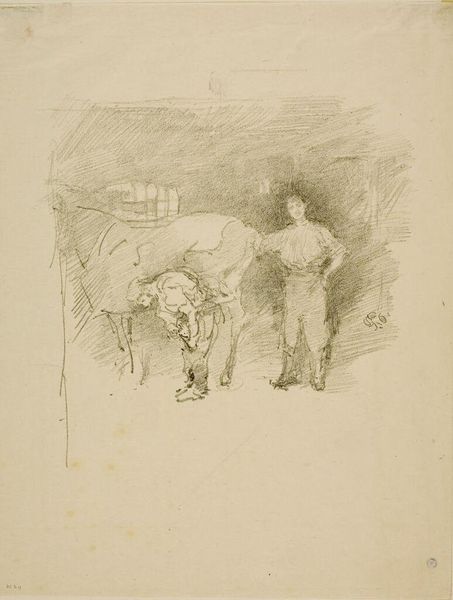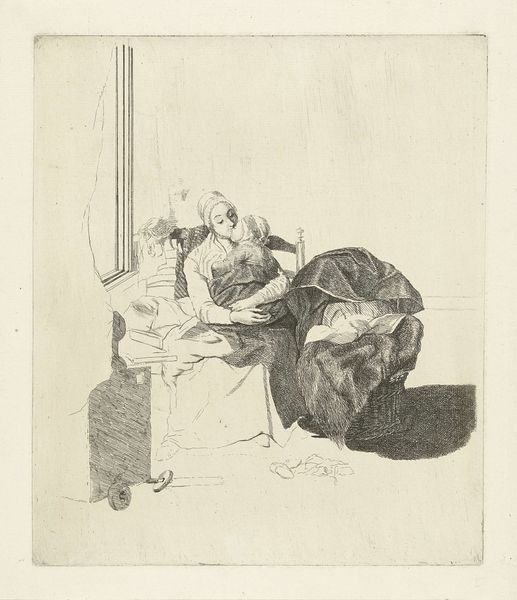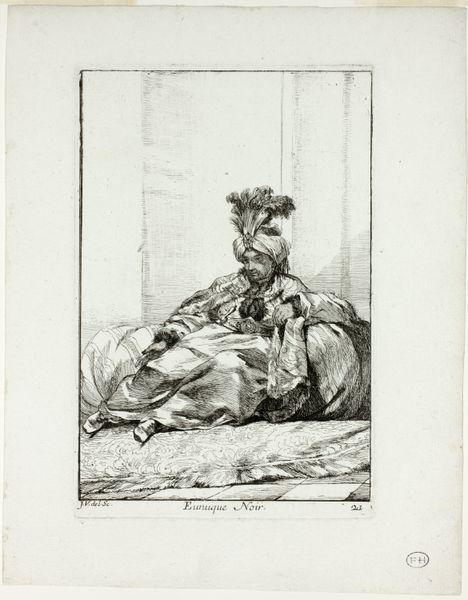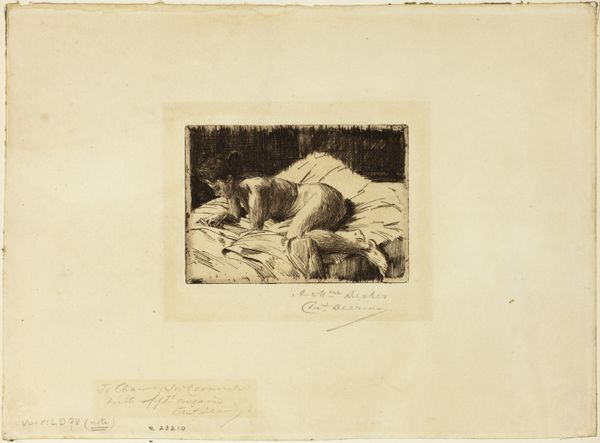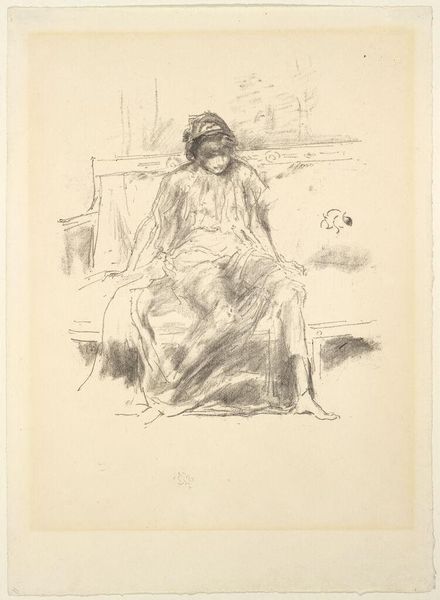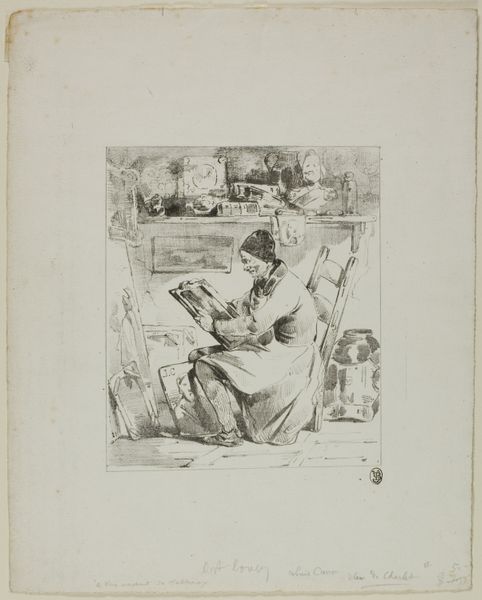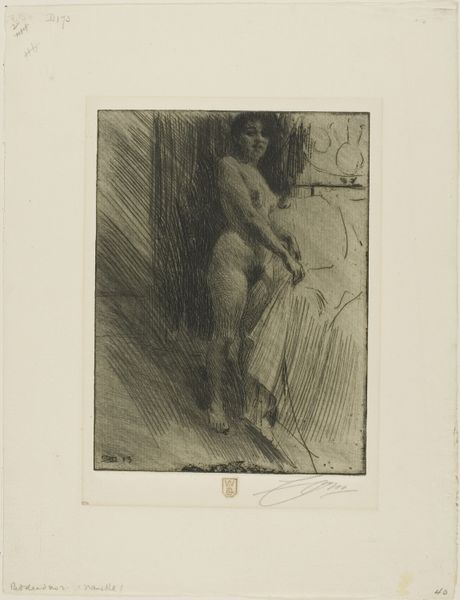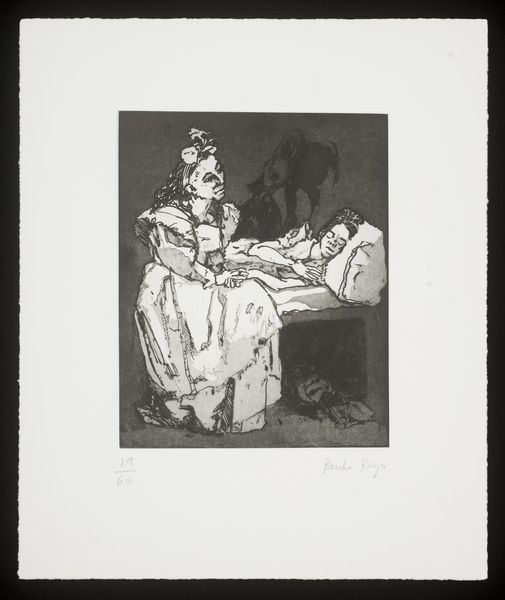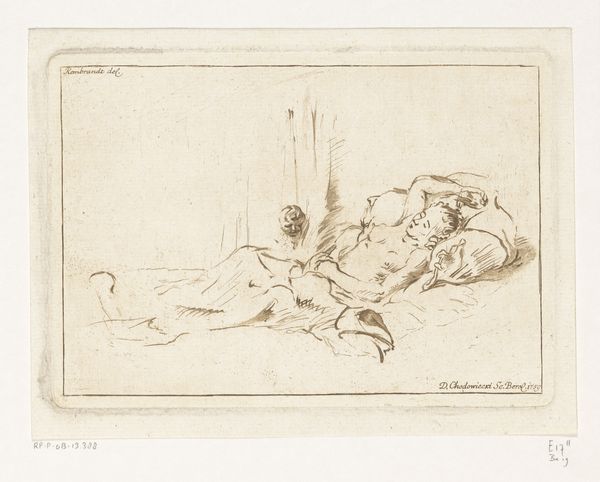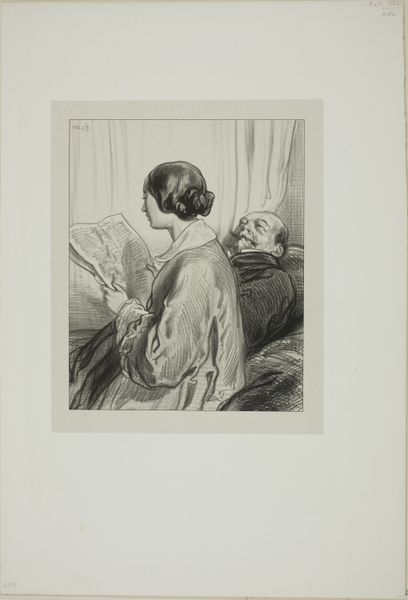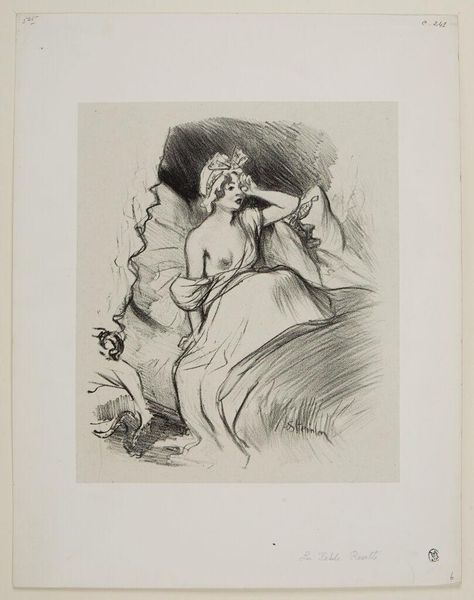
Copyright: Public domain
Editor: Here we have Anders Zorn's "The Guitar," created in 1895, an etching rendered with intaglio. The light and shadow create a very intimate mood, a woman lounging while playing a guitar. How do you interpret this work, particularly within its historical context? Curator: This print exemplifies how artists engaged with themes of modern life and female representation in the late 19th century. Zorn, celebrated for his society portraits, often depicted women in domestic or leisure settings. What do you think this particular pose conveys? The somewhat abstracted guitar? Editor: I notice she's not looking directly at the viewer. It gives a sense of her own private moment, or a break from other activities. Curator: Precisely! Now, consider the burgeoning print market during this period. Etchings made art more accessible, democratizing images of beauty and sensuality, but also commodifying them. How do you see Zorn's work fitting into this broader phenomenon? Was this for everyone or the elites? Editor: That’s interesting! While the nude form might be seen as classically artistic, its accessibility through prints could have challenged societal norms, making it available beyond the traditional gallery or salon setting. Perhaps it was a means to access patrons across varied societal levels. Curator: Good point. This work, with its ambiguous narrative and focus on everyday life, participates in that shift toward modern themes and audience. Editor: It is fascinating to consider how the work navigates between intimacy and commodification during its time. Thank you! Curator: And thank you; it’s essential to analyze art with respect to its political and cultural origins and reception!
Comments
No comments
Be the first to comment and join the conversation on the ultimate creative platform.
